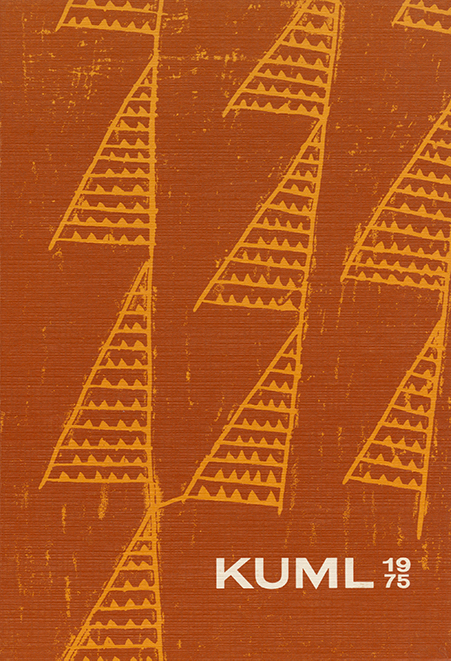Nye udgravninger i Illerup ådal
DOI:
https://doi.org/10.7146/kuml.v24i24.106163Nøgleord:
Illerup Ådal, 1975Resumé
New excavations in Illerup Ådal
In the summer of 1975 study of the weapon offerings in Illerup Ådal was resumed. The first excavations of this extensive site were undertaken by Harald Andersen in 1950-1956. Since then no work has been carried out in the field, but certain analyses of the excavated material have been made. The present interim report describes the 1975 excavations and deals with some of the problems raised in connection with the find.
Harald Andersen demonstrated that the Illerup find comprised several offerings: Site 1, the east area, from about 400 A. D., site 2, the west area, from about 200 A. D. and site 3 about coeval with site 2. The location of these three areas is shown in fig. 1.
Examination of the material excavated earlier has revealed that items recovered from the north-western part of site 1 are synchronous with those recovered from sites 2 and 3. These specimens cannot have been cast from the spot from which site 2 objects were thrown, because the distance of 40 m is too great.
These objects, with Harald Andersen's site 3, raise problems which can only be solved by excavating the area west of site 1 and north of site 2.
Experimentally, in the hope of easing excavation, we carried out in co-operation with Niels Abrahamsen, Geophysical Institute, University of Århus, proton magnetometer measurements in the area in question, and a test area was selected (fig. 2), where strongly diverging values could be checked and any extension of site 3 be registered.
The results exceeded expectations (fig. 3). A dense concentration of shield bosses, swords, spear- and lance heads, arrowheads, knives and shafts of thrusting weapons and missiles was found.
We also established a test area close to the old lake shore in order to observe the circumstances of preservation and possibly to find a limit of site 2. No boundary was found, site 2 objects being present. Preservation was found to be poor due to the subsidence of the top ½ m of the bog. The artefacts now lay just at the transition to the topsoil.
At a distance of 6-7 m from the ancient lake shore was a compact stone pavement which must have been hidden at the bottom of the lake and probably covered by a growth of rushes. No marking of these stones with posts was found. They probably served as a platform for throwing artefacts into site 3, the area of the summer excavation and the outer part of site 1. This can, however, first be ascertained with certainty, when the area has been completely excavated.
The excavation has yielded a broad cross-section of artefacts in the new site 3, which comprises Harald Andersen's site 3 and the area excavated last summer. The recent excavation yielded 20 swords and sword fragments, 8 of which were entire or nearly so, and 3 point fragments. Stamps and trade marks were common and an example is seen in fig. 6. The inscription should probably be rendered ACRISSIM MA, 'by Acrissim's hand'. On another sword is written EGO FE, 'I have made'.
The hilt on Acrissim's sword (fig. 7) has been ingeniously made. Bronze rings and iron rivets held together an organic material which has not survived the stay in the bog.
The sword in fig. 8 had a partially preserved hilt of bone. The guard is made of a hollow bone formed into a half cylinder. The holes in the bone must have been closed with bronze plates. The grip is likewise of hollow bone, decorated with longitudinal grooves.
The shield bosses were of forms known from the Vimose find. Two had an added top as Vimose pl. 5 :7 (7) and the others are of the type illustrated Vimose pl. 5:10 (8).
The 21 spear- and lance heads correspond closely to those dealt with in the article on the Vimose weapon find (9). Some examples are shown in fig. 9. From the left are shown the Vennolum type of lance head, the Simris spearhead type and the Skiaker lance and spearhead types.
A prominent single find is shown in fig. 10. This is a silver plated bronze fitting, which has been fastened to a strap and possibly served as a strap gatherer.
The objects in the test area must be dated on the basis of the content of spear and lance heads to the beginning of the late Roman Iron Age and be approximately coeval with the weapon find from Vimose (10). Chronologically, the objects found in the recent excavation also correspond very closely to those known from sites 2-3 and 1 north-west. A brief summary of the content of these sites, in comparison with artefacts from the somewhat later site 1, shows this in greater detail. In fig. 11 and 12 are shown spear- and lance heads from sites 2-3 and 1 respectively and in fig. 13 a sword from site 2 (left) may be compared with a sword from site 1 (right). Fig. 14 shows a shield boss from site 2 and fig. 15 one from site 1.
The coming excavations will perhaps supplement the rich finds of weapons with fittings, fibulae and belt buckles, which are so far few. In sites 2-3 there are possibilities, but site 1 must be considered almost depleted.
Jørgen Ilkjær og Jørn LønstrupDownloads
Publiceret
Citation/Eksport
Nummer
Sektion
Licens
Fra og med årgang 2022 er artikler udgivet i Kuml med en licens fra Creative Commons (CC BY-NC-SA 4.0).
Alle tidligere årgange af tidsskriftet er ikke udgivet med en licens fra Creative Commons.


